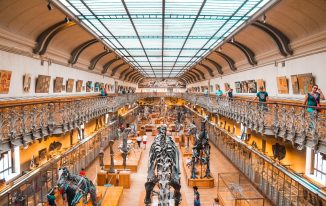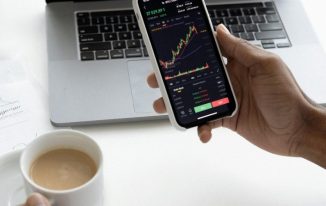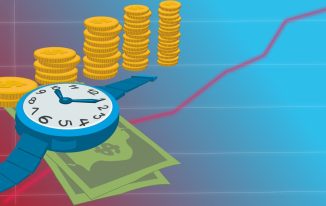Humans understand visual information better than textual ones. When data engineers and analysts knew about the impactful insight, they started inclining towards data visualization more than ever before. Nowadays, graphically representing a dataset is one of the most sought-after skill sets, and several tools have emerged to assist professionals in doing so.
Do you find data visualization to be a tedious concept to understand? You’ve landed at the best destination if that’s the case. Here we will discuss some simple examples to illustrate data visualization. Let’s get started!
Data Visualization – What is It?
It seems that you haven’t been introduced to data visualization concepts till now. So, what is Data Visualization, after all? Well, it’s the process of graphically representing the insights generated from a given dataset. Several tools like Tableau and Microsoft Power BI have emerged to visualize data more efficiently than ever. These platforms have become so essential that many enthusiastic individuals wish to get a Tableau certification course and launch a career in the domain.
Are you wondering what makes data visualization so essential? A gamut of benefits makes every business and data analyst go crazy behind graphically representing the data-driven insights. Here are the advantages that data visualization offers.
● Visualization Brings Better Analyses
Investing in data visualization enables companies to analyze sales, customer, and supply chain departments. It gives a better view of what’s going on and what needs improvement.
● Understanding Observable Patterns
Observable patterns in a given dataset become more prominent when representing them graphically. In contrast, it gets challenging to identify striking schemes in any other data format.
● Identifying Errors Becomes Easy
When you convert a dataset into a viewable format, it assists in identifying fatal errors quickly. Such spotting can speed up the data refining process and highlight flaws in workflow much faster than any other method.
● Generating Actionable Insights
A quick process implies rapid business outcomes. So, who doesn’t wish to access a blazing-fast analysis process! Thankfully, data visualization speeds up extracting insights from a given dataset and begins the refining operations at the earliest.
● Better Business Insights
An enterprise can use data visualization to extract meaningful insights without seeking assistance from experienced professionals. What’s the impact? Better business information without extra expenses, simple!
● Trends in Business
Graphical representation assists in identifying likely trends in various business processes. These trends can help you analyze areas demanding more investment and attention to optimize outcomes.
● Forecasting Upcoming Scenarios
Predicting future trends and threats can be a game-changing potential for businesses. So, companies invest in data visualization and forecast their processes well in advance. Consequently, they get more time to prepare for unpredictable situations efficiently.
Now, you can gauge the necessity of data visualization by the above points. Also, you know how beneficial a career in graphical representation can be. So, let’s discuss some examples to explain data visualization.
Some Data Visualization Examples
Data visualization is an exciting domain, and textual material might not be enough for you to explain the concepts. It is best understood with some simple examples that illustrate Data Visualization in action. Let’s get started!
1.COVID-19 Case Statistics
The dreaded pandemic has got our attention entirely. As we all head to the Internet to track new COVID-19 cases in different nations, you might have come across Google showing a world map with confirmed cases across countries illustrated as bubbles. Understandably, the bubble size grows and shrinks according to the number of patients in a region. The more the number of victims, the larger the bubble. That’s the most recent and best data visualization example.
2. Pew’s The Next US – Animated Visualization
Pew’s The Next US is yet another classic example of data visualization in action. Wait! What does it mean by “action”? It implies animated representation. The Next US is an animated graphic to illustrate the population of the USA between 1950-2060. Such a view simplifies understanding the US demography much better than textual content.
3.Explaining Movie Cast
When listening to a movie plot, we tend to forget or confuse the cast at any point in time. How about pictorially explaining the movie through actors? Yes, it’s a reality that ensures the audience remembers all topics chronologically. Consequently, it binds the viewers with the movie line for the most extended duration.
4.Napoleon’s March Map
Napoleon’s March Map illustrated his journey to Moscow in 1812. History remembers the event among one of the biggest failures of all times. Since its inception, Napoleon’s March Map has become the best example for data visualizations. It pictorially explains all events associated with the campaign.
5.Three-Dimensional Population Density Mapping
How simple would a demographic analysis become if you could ask the entire region’s population to assemble? Luckily, you can do that! Although not physically, you can build a crowd on a virtual map according to the demography using data visualization.
6.Artist Color Palettes
Artistry is all about viewing the colors and creativity. So, Arthur Buxton analyzed the color schemes used by renowned painters to understand their arts better. It explains how their color choices varied in a span of ten years and enhanced their masterpieces.
A Career in Data Visualization – The Skills Needed
Hopefully, the above examples explained the meaning of data visualization and inspired you enough to build a career in the industry. Now, we can discuss something more relevant to your future, the skills. Take a look!
- You require mastering the data visualization tools like Microsoft Power BI and Tableau.
- It would help if you had exposure to programming languages, primarily R.
- You must possess excellent analytical skills.
- It will help if you have proficiency in dealing with massive datasets.
- You should be good at mathematics and computation
- Besides, you also require having excellent communication skills to understand organizational demands
- It would help if you had well-familiarity in manipulating and processing numbers
That’s all! As you know the best examples in data visualization, the journey will become more exciting for you. So, get a suitable course and get started with graphical representation today!



